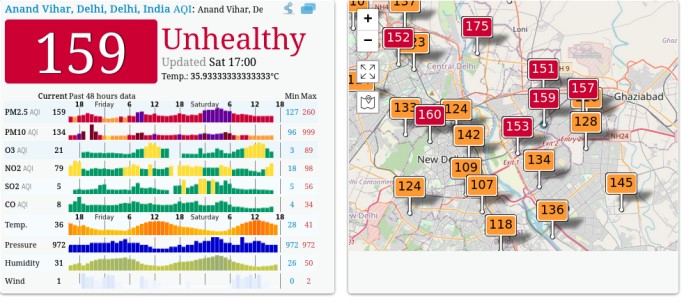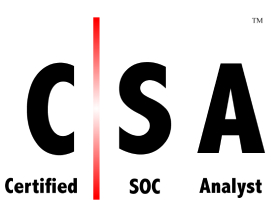Internet of Things or IoT consists of interconnected devices that have sensors and software, which are connected to automated systems to gather information and depending on the information collected various actions can be performed. It is one of the fastest growing markets, with enterprise IoT spending to grow by 24% in 2021 from $128.9 billion. (IoT Analytics, 2021).
This massive growth brings new challenges to the table as administrators need to secure IoT devices in their network to prevent them from being security threats to the network and attackers have found multiple ways through which they can gain unauthorized access to systems by compromising IoT systems.
IoT Forensics is a subset of the digital forensics field and is the new kid on the block. It deals with forensics data collected from IoT devices and follows the same procedure as regular computer forensics, i.e., identification, preservation, analysis, presentation, and report writing. The challenges of IoT come into play when we realize that in addition to the IoT sensor or device we also need to collect forensic data from the internal network or Cloud when performing a forensic investigation. This highlights the fact that Forensics can be divided into three categories: IoT device level, network forensics and cloud forensics. This is relevant because IoT forensics is heavily dependent on cloud forensics (as a lot of data is stored in the cloud) and analyzing the communication between devices in addition to data gathered from the physical device or sensor.
Why IoT Forensics is needed
The proliferation of Internet connected devices and sensors have made life a lot easier for users and has a lot of benefits associated with it. However, it also creates a larger attack surface which is vulnerable to cyberattacks. In the past IoT devices have been involved in incidents that include identity theft, data leakage, accessing and using Internet connected printers, commandeering of cloud-based CCTV units, SQL injections, phishing, ransomware and malware targeting specific appliances such as VoIP devices and smart vehicles.
With attackers targeting IoT devices and then using them to compromise enterprise systems, we need the ability to extract and review data from the IoT devices in a forensically sound way to find out how the device was compromised, what other systems were accessed from the device etc.
In addition, the forensic data from these devices can be used to reconstruct crime scenes and be used to prove or disprove hypothesis. For example, data from a IoT connected alarm can be used to determine where and when the alarm was disabled and a door was opened. If there is a suspect who wears a smartwatch then the data from the watch can be used to identify the person or infer what the person was doing at the time. In a recent arson case, the data from the suspects smartwatch was used to implicate him in arson. (Reardon, 2018)
The data from IoT devices can be crucial in identifying how a breach occurred and what should be done to mitigate the risk. This makes IoT forensics a critical part of the Digital Forensics program.
Current Forensic Challenges Within the IoT
The IoT forensics field has a lot of challenges that need to be addressed but unfortunately none of them have a simple solution. As shown in the research done by M. Harbawi and A. Varol (Harbawi, 2017) we can divide the challenges into six major groups. Identification, collection, preservation, analysis and correlation, attack attribution, and evidence presentation. We will cover the challenges each of these presents in the paper.
A. Evidence Identification
One of the most important steps in forensics examination is to identify where the evidence is stored and collect it. This is usually quite simple in the traditional Digital Forensics but in IoT forensics this can be a challenge as the data required could be stored in a multitude of places such as on the cloud, or in a proprietary local storage.
Another problem is that since IoT fundamentally means that the nodes were in real-time and autonomous interaction with each other, it is extremely difficult to reconstruct the crime scene and to identify the scope of the damage.
A report conducted by the International Data Corporation (IDC) states that the estimated growth of data generated by IoT devices between 2005 to 2020 is going to be more than 40,000 exabytes (Yakubu et al., 2016) making it very difficult for investigators to identify data that is relevant to the investigation while discarding the irrelevant data.
B. Evidence Acquisition
Once the evidence required for the case has been identified the investigative team still has to collect the information in a forensically sound manner that will allow them to perform analysis of the evidence and be able to present it in the court for prosecution.
Due to the lack of a common framework or forensic model for IoT investigations this can be a challenge. Since the method used to collect evidence can be challenged in court due to omissions in the way it was collected.
C. Evidence Preservation and Protection
After the data is collected it is essential that the chain of custody is maintained, and the integrity of the data needs to be validated and verifiable. In the case of IoT Forensics, evidence is collected from multiple remote servers, which makes maintaining proper Chain of Custody a lot more complicated. Another complication is that since these devices usually have a limited storage capacity and the system is continuously running there is a possibility of the evidence being overwritten. We can transfer the data to a local storage device but then ensuring the chain of custody is unbroken and verifiable becomes more difficult.
D. Evidence Analysis and Correlation
Due to the fact that IoT nodes are continuously operating, they produce an extremely high volume of data making it difficult to analyze and process all the data collected. Also, since in IoT Forensics there is less certainty about the source of data and who created or modified the data, it makes it difficult to extract information about ownership and modification history of the data in question.
With most of the IoT devices not storing metadata such as timestamps or location information along with issues created by different time zones and clock skew/drift it is difficult for investigators to create causal links from the data collected and perform analysis that is sound, not subject to interpretation bias and can be defended in court.
E. Attack and Deficit Attribution
IoT forensics requires a lot of additional work to ensure that the device physical and digital identity are in sync and the device was not being used by another person at the time. For example, if a command was given to Alexa by a user and that is evidence in the case against them then the examiner needs to confirm that the person giving the command was physically near the device at the time and that the command was not given over the phone remotely.
F. Evidence Presentation
Due to the highly complex nature of IoT forensics and how the evidence was collected it is difficult to present the data in court in an easy to understand way. This makes it easier for the defense to challenge the evidence and its interpretation by the prosecution.
VI. Opportunities of IoT Forensics
IoT devices bring new sources of information into play that can provide evidence that is hard to delete and most of the time collected without the suspect’s knowledge. This makes it hard for them to account for that evidence in their testimony and can be used to trip them up. This information is also harder to destroy because it is stored in the cloud.
New frameworks and tools such Zetta, Kaa and M2mLabs Mainspring are now becoming available in the market which make it easier to collect forensic information from IoT devices in a forensically sound way.
Another group is pushing for including blockchain based evidence chains into the digital and IoT forensics field to ensure that data collected can be stored in a forensically verifiable method that can’t be tampered with.
Conclusion
IoT Forensics is becoming a vital field of investigation and a major subcategory of digital forensics. With more and more devices getting connected to each other and increasing the attack surface of the target it is very important that these devices are secured and have a sound way of investigating if and when a breach happens.
Tools using Artificial Intelligence and Machine learning are being created that will allow us to leverage their capabilities to investigate breaches, attacks etc faster and more accurately.
References
Reardon. M. (2018, April 5). Your Alexa and Fitbit can testify against you in court. Retrieved from https://www.cnet.com/tech/mobile/alexa-fitbit-apple-watch-pacemaker-can-testify-against-you-in-court/.
M. Harbawi and A. Varol, “An improved digital evidence acquisition model for the Internet of Things forensic I: A theoretical framework”, Proc. 5th Int. Symp. Digit. Forensics Security (ISDFS), pp. 1-6, 2017.
Yakubu, O., Adjei, O., & Babu, N. (2016). A review of prospects and challenges of internet of things. International Journal of Computer Applications, 139(10), 33–39. https://doi.org/10.5120/ijca2016909390
Note: This was originally written as a paper for one of my classes at EC-Council University in Q4 2021, which is why the tone is a lot more formal than my regular posts.
– Suramya


